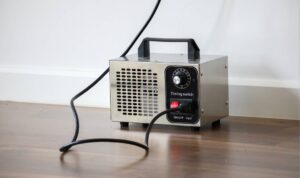In the depths of winter’s chill or the heights of summer’s swelter, the comfort of your home hinges on a hidden hero: insulation. The importance of choosing the right insulation cannot be overstatedA, for it not only maintains your living quarters as a haven of comfort but also has profound impacts on energy consumption and costs. With a plethora of insulation options available, finding the ideal fit for your home’s unique needs can be a daunting task.
Understanding the composition of wall cavities and the behavior of different insulation materials is crucial in assessing how effectively they’ll keep your home temperate. Spray foam, fiberglass batts, loose-fill, and insulated panels represent just the tip of the insulative iceberg, each with their pros and cons. Deciphering among these choices requires a grasp of their singular attributes and how they align with the nuances of your space.
A well-insulated home is more than a mere collection of materials filling spaces; it’s a thoughtful blend of energy efficiency, budgetary constraints, and environmental stewardship. The following article will guide you through the intricate process of selecting the perfect insulation, taking into account factors like thermal resistance and the installation process. We will also delve into insulation strategies tailored to specific parts of your home and investigate the broader spectrum of materials available, from natural fibers to cutting-edge plastic innovations.
Wall cavities
Wall cavities, the hollow spaces nestled between the inner and outer layers of a structure’s walls, are pivotal in a building’s thermal regulation. If left uninsulated, these voids can lead to significant heat loss. Addressing wall cavities through proper insulation offers an efficient solution to energy conservation, ultimately reducing energy bills.
To insulate wall cavities, a technique often employed involves drilling small holes into the exterior walls and injecting insulation material. This transforms the cavities into barriers against the cold, utilizing materials such as:
- Polyurethane foam: Known for its exceptional air sealing properties.
- Cellulose: A recycled material providing a sustainable option.
- Fiberglass: A common choice for its ability to limit heat transfer.
- Mineral wool: Offers superior sound and fire resistance.
The installation process varies, depending on the insulation type. For instance, certain insulations, like loose-fill or blown-in options, are ideal for both existing dwellings and newly constructed sites because they can be densely packed without major disruptions.
When selecting the appropriate insulation method for wall cavities, factors like thermal resistance, material preference, and whether the structure is undergoing renovation or is newly built, all play vital roles in the decision-making process.
Types of insulation
When considering how to improve a home’s energy efficiency and comfort, examining the various types of insulation becomes critical. Insulation’s primary function is to minimize the exchange of heat through surfaces like walls, attic floors, and crawl spaces. Optimal insulation keeps a home warm during the winters and cool during the summers, bringing down the amount of energy used for heating and cooling, which naturally leads to lower energy bills.
The most prominent types of insulation include spray foam, cellulose, and fiberglass. Each comes with distinctive benefits and is suitable for different purposes, from sealing gaps to insulating large open areas like attics. The effectiveness of insulation is often quantified by its R-value, which measures thermal resistance. A higher R-value signifies better insulative properties, making that insulation type more capable of reducing heat flow.
Insulation materials are diverse, ranging from the familiar fiberglass batts to innovative insulated panels and an array of natural and synthetic fibers. Loose-fill insulation can be perfect for irregular spaces or retrofitting old buildings, while blanket insulation (available as batts or rolls) is often used where standard spacing between rafters or studs exists. More specialized forms, like insulated panels, provide a high-tech alternative for new construction.
The suitability of each insulation type depends on several factors, including the area to be insulated, the existing structure, and the desired level of energy efficiency. Often, specific tools or expertise are needed for installation—like special equipment for blowing loose-fill insulation into closed wall cavities or concrete forms to support the insulative material within walls.
Choosing the right type of insulation can create a more consistent internal environment, reduce dependency on heating and cooling systems, and ensure a quieter, more comfortable living space. Let’s delve deeper into some of the most common insulation types available and how they can serve various insulation needs.
Spray foam insulation
Spray foam insulation is known for its superior sealing capabilities, providing both insulation and an air barrier. Applied as a liquid, it swiftly expands to fill cracks, gaps, and voids, quickly solidifying to create a dense, energy-efficient barrier. Homeowners can choose between open-cell and closed-cell spray foam. The open-cell variety is less dense with a lower R-value of around 3.8 per inch, while closed-cell foam offers a denser solution, boasting an impressive R-value of approximately 7 per inch. These characteristics make spray foam particularly effective in preventing heat loss and uncontrolled airflow, though it does come at a higher initial cost compared to traditional insulation types.
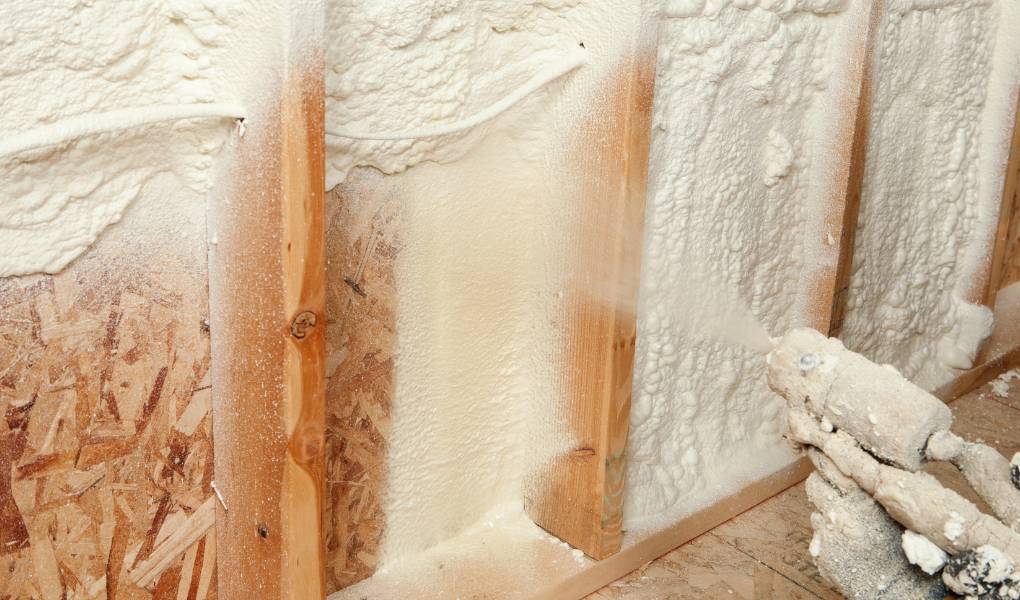
Fiberglass batts
Fiberglass batts, a popular and widely accessible insulation type, are made from fine strands of glass woven into a thermal blanket. These batts excel in soundproofing, diminishing the transference of noise for a quieter home environment. Alongside their acoustic benefits, fiberglass batts are valued for their non-settling structure, which helps maintain their shape and insulating capabilities over time. Available in various thicknesses and widths, they are conveniently engineered to fit between standard framing in walls, floors, and ceilings. Not only do they provide reasonable thermal insulation, but the built-in vapor barrier offers additional resistance to fire spread.
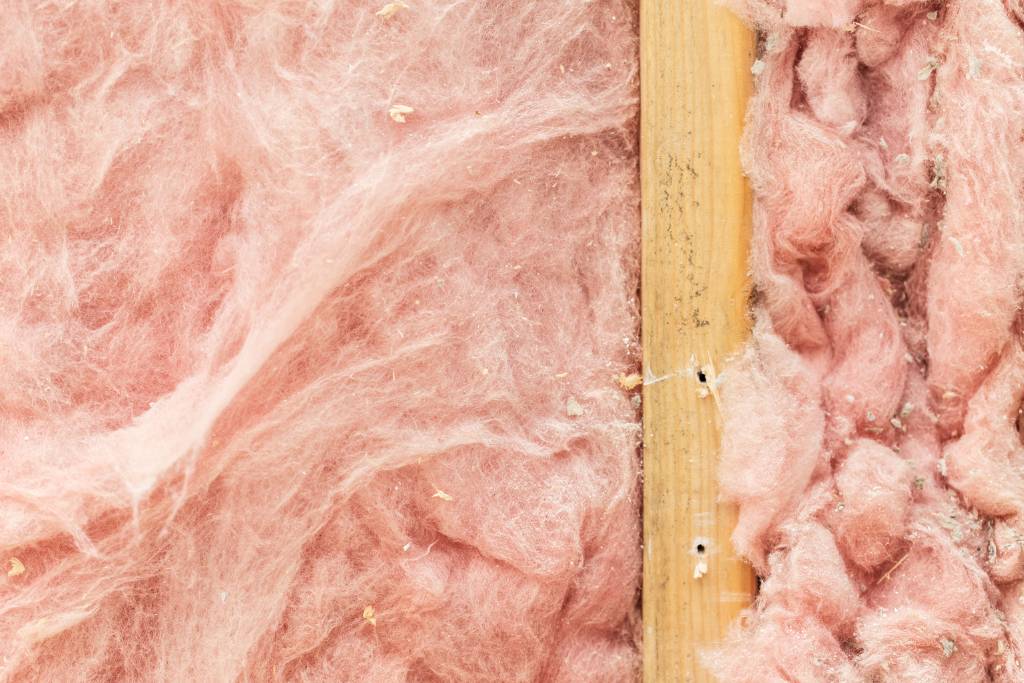
Loose-fill insulation
Loose-fill insulation is an adaptable option that’s blown or poured into spaces, making it ideal for insulating existing walls, attics, or new wall cavities. Materials commonly used for loose-fill include fiberglass, cellulose, and mineral wool, with many variants comprising significant amounts of recycled content. The installation usually necessitates professional equipment and expertise to ensure that the insulation fills spaces uniformly without leaving gaps. This form of insulation can be customized for various R-values to meet specific requirements, and it is particularly beneficial for energy conservation in irregularly shaped areas and around obstacles.
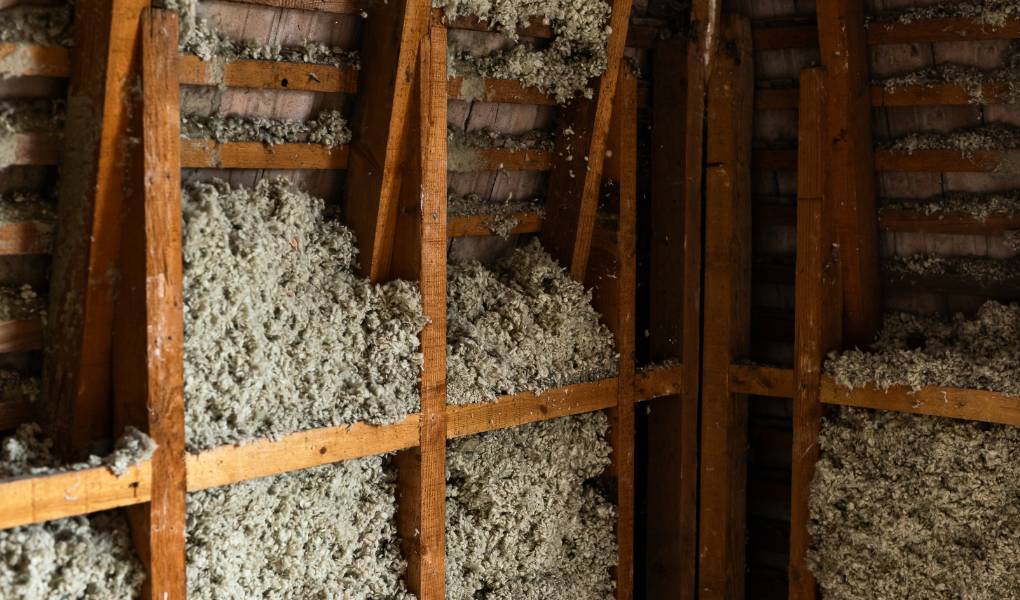
Insulated panels
For those seeking a modern, efficient approach to building insulation, Structural Insulated Panels (SIPs) may be the perfect solution. These prefabricated building materials consist of a foam core ensconced between two rigid boards, creating a layer of insulation that is unparalleled in standard stick-frame construction. The foam core types range in material, each with a different R-value, providing options for varying insulation needs. Given their pre-made nature, SIPs can dramatically shorten construction time and may even reduce costs by minimizing framing labor. While they can reduce high-frequency noise,’s important to note that SIPs may need additional materials or techniques to mitigate low-frequency sound transmission thoroughly.
Factors to consider when choosing insulation
When determining the right insulation for a home, it’s essential to contemplate several key factors to maximize energy efficiency, cost-effectiveness, and environmental impact. Proper installation is paramount and largely determines the performance of insulation, so the suitability of the insulation material for the home’s location and climate must be considered carefully. Specialized insulation types are designed for different parts of the house; for example, blanket batts or rolls are ideal for new walls, while loose-fill insulation is more suited to existing walls or irregular spaces.
For those wishing to make an environmentally conscious decision, a variety of sustainable options, such as cellulose, wool, denim, or cork, are available. Though often carrying a higher cost than traditional materials, these options mitigate the ecological footprint of home construction. It’s also important to weigh specific benefits like sound reduction and moisture resistance that come with certain insulation materials like fiberglass, as they can lead to increased living comfort.
The choice of material can be influenced by the specific region of installation as well, whether it be within exterior walls, attics, basements, or around plumbing systems. As technology advances, insulation options have expanded, offering a range of solutions from acoustic insulation that can reduce noise to thermal boards that greatly improve a home’s heat retention capabilities.
Energy efficiency
In the pursuit of energy efficiency, closed-cell spray foam insulation stands out for its high R-value per inch, reaching as much as R-6.2 per square inch, hence offering superior energy-saving potential. Traditional forms like fiberglass and cellulose are good at resisting heat transfer through conduction but may not provide the same level of protection against airflow as some of the more advanced solutions, which can affect overall efficiency.
A home’s walls are critical checkpoints for insulation; up to a third of a property’s heat can be lost through poorly insulated walls, emphasizing the importance of this measure for energy efficiency. Additionally, insulating hot water pipes and air ducts in unconditioned spaces like attics can lead to significant energy savings by reducing heat loss and managing the temperature with greater precision.
Budget considerations
The cost of insulation can vary widely depending on the material type. While batt insulation is generally more affordable and a wise choice for spaces like unfinished walls, floors, and ceilings, opting for materials with higher R-values might be costly upfront but can yield considerable long-term savings on energy expenses. When navigating budget constraints, it’s crucial to factor in not just the initial cost but the potential energy savings, health implications, and the durability of the insulation.
Reflective or radiant barriers can offer a budget-friendly alternative; however, they commonly necessitate the use of supplementary insulation for adequate thermal resistance. For hands-on homeowners, DIY-friendly options like batts and rolls can cut installation expenses, though it’s important these are installed correctly to ensure their effectiveness isn’t compromised.
Environmental impact
For those prioritizing sustainability, insulation produced from recycled or natural materials presents an effective way to minimize environmental impact. Such materials, including but not limited to, recycled denim, sheep’s wool, cork, and cellulose, help to reduce construction waste. While eco-friendly options are typically more expensive than conventional insulation materials, these variations come in multiple forms, catering to a diverse array of installation needs and preferences. By choosing recycled and natural insulation materials, homeowners contribute to sustainability and eco-friendly construction practices.
Installation process
The installation of insulation varies depending on the type. Blown-in insulation, particularly suitable for attics and existing walls, involves machinery that disperses the insulation material evenly within the space. Rigid fiberboard insulation, commonly used for air ducts, requires professional installation using specialized fasteners and sealants to ensure its effectiveness. Reflective barriers are often combined with other insulation types and can be installed by homeowners themselves, though it should be noted that they are generally less effective when used alone.
Spray foam insulation requires specific spray equipment and professional handling, particularly for larger areas or enclosed walls. When it comes to insulating concrete forms (ICFs), although more expensive, they play a dual role as both the structural form and insulation. Their installation typically demands specialist handling due to the technical nature of working with concrete. Each installation process comes with its distinct set of challenges and requirements, which must be anticipated and addressed to ensure the insulation functions as intended.
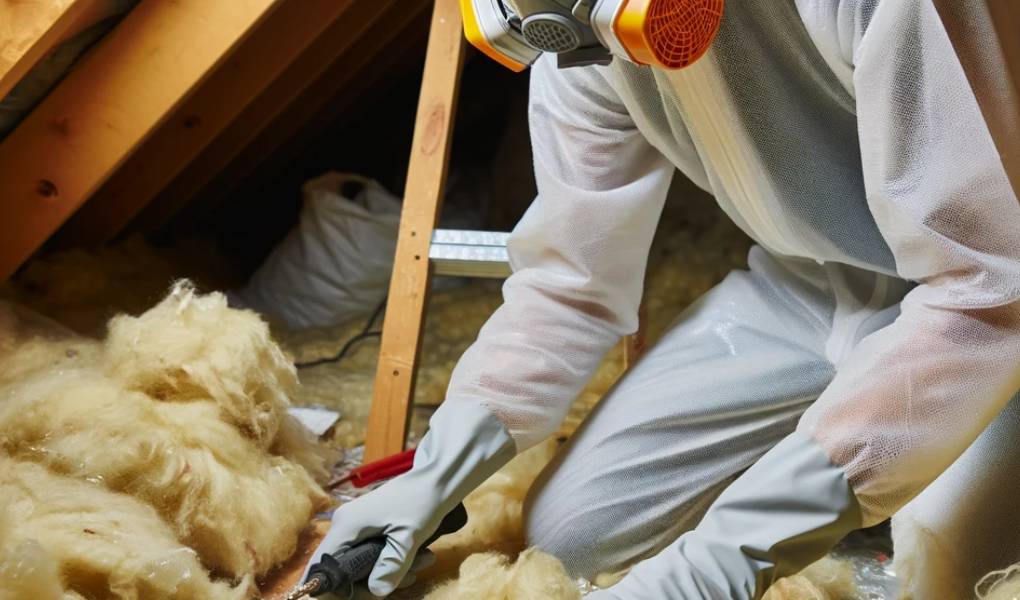
Choosing the right insulation for different parts of your home
Selecting the proper insulation for different areas of your home is a critical decision that can significantly impact your comfort, energy efficiency, and utility costs. To choose the best insulation, you must consider the climate in which you live, the specific area of the home you are insulating, and the R-value needed to effectively reduce heat flow. Different types of insulation materials, such as spray foam, fiberglass, cellulose, natural fibers, and rigid foam board, serve distinct purposes and are suited to various applications within the home.
Safety considerations are also paramount, with factors like fire resistance, mold prevention, and pest deterrence playing crucial roles in determining the most suitable type of insulation. The potential for air leakage through gaps and holes must also be taken into account to ensure that the chosen insulation will perform optimally.
Attic floors
For attic floors, fiberglass batt insulation is a prevalent choice because it comes in convenient rolls that can be laid out between attic joists. Additionally, blown-in insulation, using either loose-fill fiberglass or cellulose, is ideal for attics with irregular shapes, obstructions, or if you’re looking to upgrade existing insulation without major renovation. Professionals using specialized equipment typically perform this installation, but it can also be a DIY project for those who are handy and have access to the necessary tools.
Spray foam insulation, particularly closed-cell varieties, provides excellent sealing properties for gaps and leaks, and can be an effective option for attic floors. This type of insulation must be carefully applied and then trimmed if overexpansion occurs. In hotter climates, reflective insulation or radiant barriers can be installed to repel heat, which can lead to lower cooling costs and improved efficiency for air conditioning systems.
For those with environmental concerns, consider cellulose or denim insulation made from recycled materials. These materials not only insulate effectively but also contribute to a more sustainable household by reusing waste materials.
Exterior walls
When it comes to exterior walls, insulation choices range from rigid polystyrene foam, which can be installed directly onto the walls, to house wraps that protect against moisture and preserve the R-value of the insulation. DIYers can install rigid foam board insulation to reduce heat conduction through wooden or steel studs, offering enhanced thermal resistance.
Special consideration should be given to materials like rigid foam boards made from polystyrene or polyisocyanurate for their suitability in insulating various parts of the exterior wall. Structural insulated panels (SIPs) are less DIY-friendly but offer superior heat transfer reduction for new construction projects. Although not suitable for retrofitting existing walls, SIPs ensure a tightly sealed and energy-efficient envelope when installed professionally.
Unfinished walls
For new construction or remodeling where walls are open and unfinished, batt insulation is typically the go-to option. Easy to install between framing structures and available in various materials from natural fibers to fiberglass and mineral wool, batt insulation can suit a variety of insulation needs.
Spray foam insulation excels in its ability to seal and insulate simultaneously and is particularly suited for new wall cavities and areas around irregular framing. However, care must be taken not to compress blanket batts or rolls during installation, which could diminish their R-value and overall effectiveness. Structural Insulated Panels (SIPs) are recommended for significantly improving the R-value of unfinished walls and decreasing thermal bridging in new construction projects.
By taking into account these specific characteristics and regional needs, homeowners can make informed decisions on the most appropriate insulation for each part of their home, leading to optimal energy savings and enhanced comfort.
Insulation materials
When upgrading your home insulation, the breadth of available materials can tailor-fit any specific need, from enhancing energy efficiency to providing a sound barrier against outside noise. Insulation comes in various forms, such as batts, loose-fill, rigid foam board, spray foam, and multi-foil, catering to different areas and applications within a residence. Natural fibers, plastic fibers, fiberglass, mineral wool, and cellulose are all common types of insulation, each with unique properties and applications.
The effectiveness and longevity of each insulation type can fluctuate based on factors such as the materials employed, the area of installation, and the desired attributes. For instance, a premium is placed on materials that offer superior thermal resistance, known as R-value, or special capabilities such as acoustic insulation. Homeowners should consider each material’s specific benefits to select the most energy-efficient and cost-effective insulation for their homes, ultimately influencing their energy bills and comfort levels.
Natural fibers
In the realm of eco-friendly construction materials, natural fiber insulation is gaining popularity. Derived from cotton, sheep’s wool, straw, and hemp, these fibers often come from recycled sources, aligning with contemporary environmental values. To make them suitable for home insulation, they undergo chemical treatments to bolster their resistance to fire, mold, and insect-related damages. These fibers are usually available in the form of batts or panels for easy installation. Additionally, materials like denim, when treated with borate, can achieve Class A fire resistance ratings, high acoustic dampening properties, and solid thermal performance, presenting an alluring option for an environmentally conscious homeowner.
Plastic fibers
Plastic fiber insulation, often found in the form of batts or rolls, delivers installation convenience for various domestic spaces. Custom-designed to fit within typical wall studs, attic trusses, and floor joists, these batts and rolls can be hand-trimmed to snugly fill the unique contours of a room. This particular type of insulation frequently comes manufactured with a facing that acts as a vapor and/or air barrier, which can be crucial for preventing moisture build-up and heat transfer. Certain plastic fiber insulation products include a flame-resistant facing that makes them suitable for use in exposed areas, enhancing their adaptability and safety in different home settings.
Fiberglass
Fiberglass stands out as the most ubiquitous insulation type, composed of minuscule glass fibers that can be purchased as loose-fill or in batts. This material is notable for its sound-dampening qualities, reducing unwanted external noise and minimizing sound travel through internal partitions. Fiberglass is eco-friendly, often made from sources like sand or reclaimed glass. It is bound with a vapor that imparts flame resistance to the material. While loose-fill fiberglass is particularly adept at filling odd spaces and covering hard-to-reach locales, the material’s properties allow it to endure high temperatures, resist moisture, and deflect chemical meddling, though it’s slightly less resistant to abrasion.
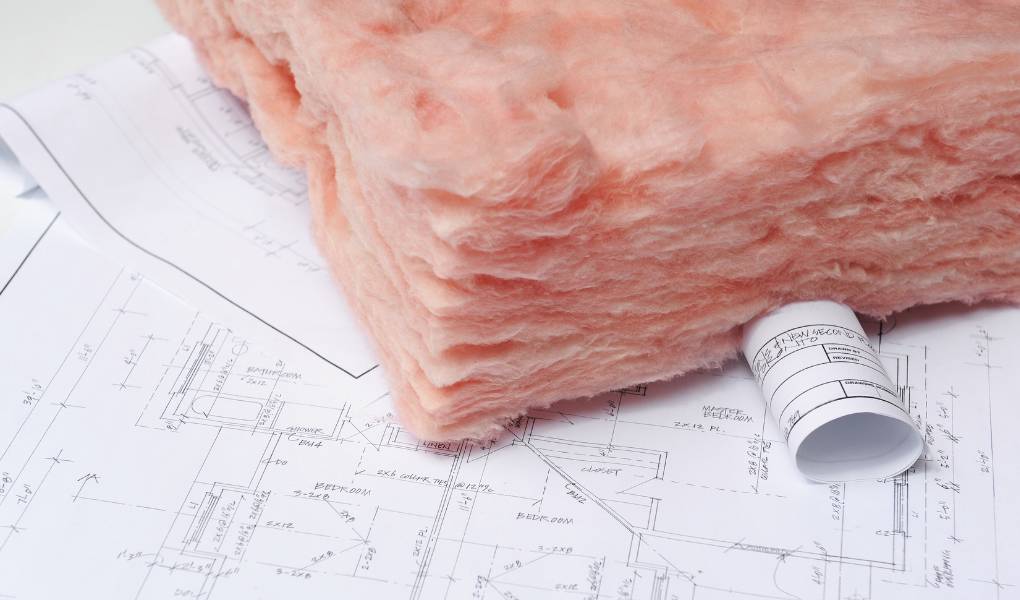
Mineral wool insulation
Mineral wool insulation, an aggregate of natural minerals or a fusion of these minerals with blast furnace slag, is melted and drawn into fibers to create an insulative substance. A versatile option, mineral wool comes in forms that suit a wide array of household applications – batts, rolls, and loose-fill – for use in walls, floors, attic spaces, and beyond. As a fire-resistant insulation choice, mineral wool is valuable for added safety in residential construction. Among mineral wool varieties, rock wool derives from natural minerals, whereas slag wool is a byproduct from metal smelting operations, both contributing to its fire-retarding capabilities.

Cellulose insulation
Cellulose insulation is predominantly crafted from recycled paper, like newspapers and cardboard, boasting an impressive recycled content of up to 80%. This insulation type, treated chemically to withstand heat, moisture, and pest invasions, is often deployed as loose-fill or blown-in, making it adept for both attic floors and wall cavities. Cellulose has the added advantage of supporting environmental sustainability efforts, slashing the necessity for landfill use due to its recycled material formation. Protection enhancements, such as boric acid application, not only render cellulose fire-resistant but also upgrade its thermal resistance, making it a practical and eco-conscious choice for insulation.
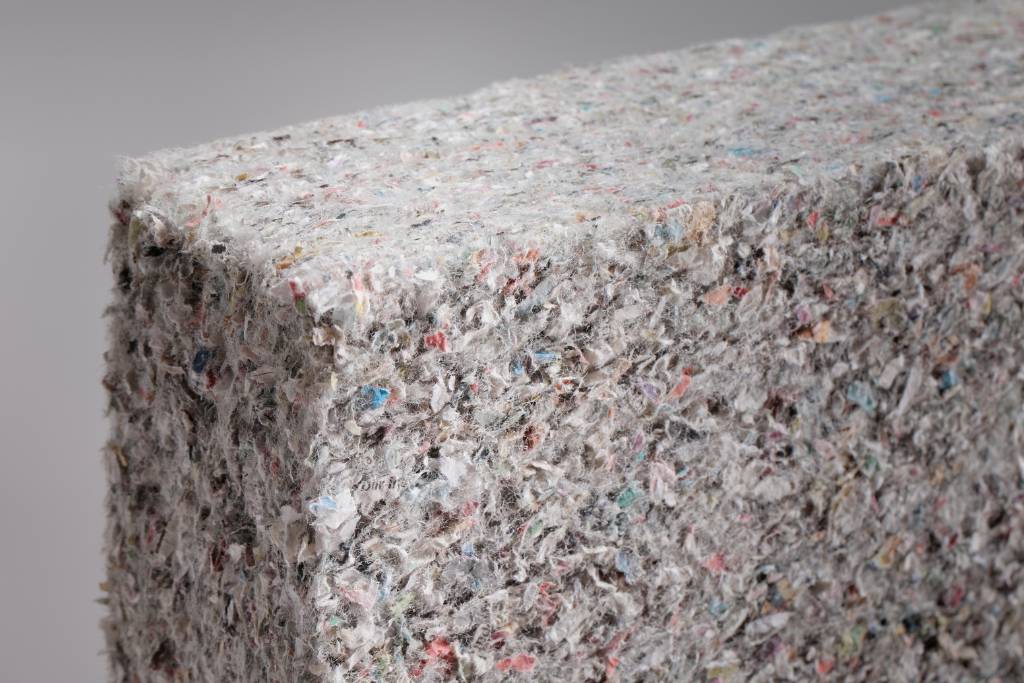
Special considerations
When contemplating home insulation solutions, special considerations must guide your decisions to ensure maximum effectiveness. The quality of installation is paramount; improperly installed insulation can severely reduce its insulating power. Similarly, the specific local climate and geographical location dictate the suitable type of insulation; for example, high R-value materials are more crucial in colder climates to resist heat loss, while in warmer regions, radiant barriers might be more beneficial.
Different areas of the home benefit from particular types of insulation. For new walls and unfinished areas, blanket batts or rolls are convenient, while existing walls and tricky spaces may be better served by loose-fill insulation. Each material has its own merits, with some enhancing soundproofing, and others boasting recycled content for eco-friendliness. Additional properties could include water damage prevention and fire resistance. Always consider the R-value that matches your regional climate when estimating the amount of material needed.
The choice of insulation materials includes boards, rolls, batts of various fibers, multifoil, and special products tailored to your acoustic and thermal needs. Each type comes with distinctive advantages, from energy savings to installation convenience, making it essential to weigh their suitability based on the intended application.
Recycled materials
Taking a step towards environmental stewardship, the use of recycled materials in insulation is not only practical but also sustainable. Cellulose insulation leads the charge with 80% recycled paper content. The commitment to using recycled materials extends to loose-fill and blown-in insulations, including fiberglass and mineral rock wool.
Recycled denim is another creative repurposing of post-consumer jeans turning waste into effective thermal and acoustic insulators. Mineral wool, made from natural and reused materials, contributes to fire safety, while fiberglass incorporates recycled glass in a bid to lower ecological footprints. Choosing insulation with recycled materials helps close the recycling loop, providing a conscientious way to conserve resources and enhance home energy efficiency.
Radiant barriers
In hot climates, radiant barriers are a game-changer, potentially trimming cooling costs by 5-10% thanks to their heat-reflective properties. Typically combining aluminum foil with a backing like kraft paper or plastic film, they reflect rather than absorb heat, especially impactful in attics. While they are suboptimal as stand-alone insulation in cold weather, they complement other materials well.
Installation ease allows radiant barriers to wrap ductwork and pipes effectively. Their reflectivity is sensitive to dust accumulation, which suggests that maintenance is critical for sustained performance. Most cost-effective in warm regions, they’re an investment in keeping your abode cool and your energy bills in check.
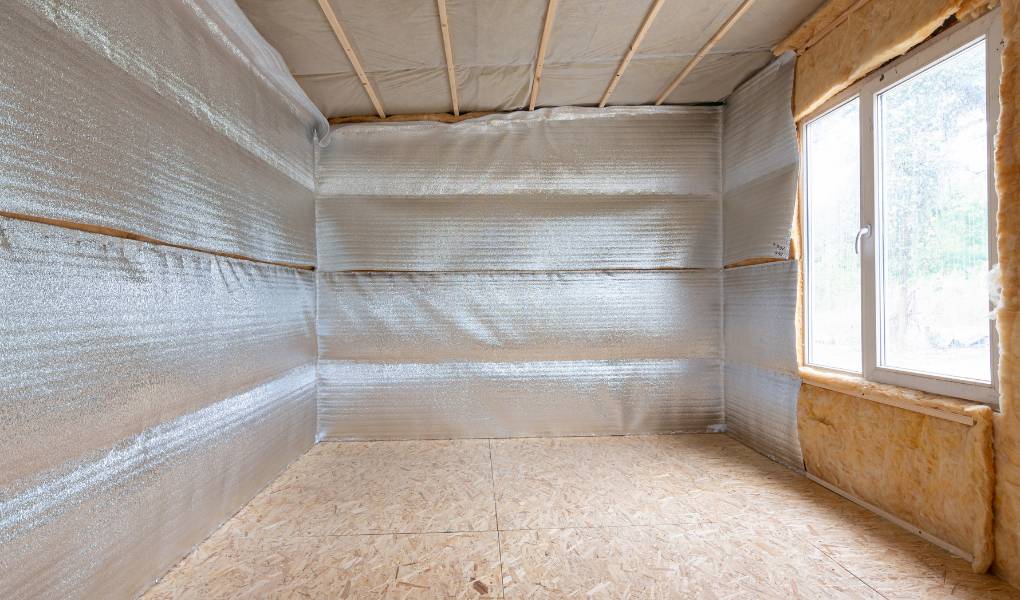
Thermal resistance
Thermal resistance, or R-value, is the measure of an insulation material’s prowess in resisting heat flow—the higher the R-value, the more formidable the insulation. Insulated concrete forms (ICFs) are champions of thermal resistance, reaching R-20 ratings due to air channels between concrete layers. Closed-cell spray foam insulation excels at sealing out air and adding impressive thermal resistance, perfect for band joists.
Foam board materials, including polystyrene and polyurethane, double the resistance of other materials at the same thickness. Thermal resistance is a linchpin in managing indoor climate control and optimizing energy efficiency, mitigating heat transmission to create a cozy and cost-effective home environment.
Air barrier
Spray foam insulation excels as an air barrier, sealing homes from drafts and energy loss, which bolsters energy efficiency. By mitigating uncontrolled air movement through gaps, it serves as the guardian of indoor temperature consistency, sending uninvited cold or hot air packing and enhancing the habitable comfort of your living space.
This air barrier not only preserves energy but also protects indoor air quality from external pollutants. When installed correctly, it reduces the HVAC systems’ workload by minimizing conditioned air escape. An all-encompassing approach is required—a high R-value alone won’t cut it unless the air barrier installation is flawless, emphasizing the significance of professional installation for airtight success.
Need help? call Attic Crew today for all your insulation needs!



